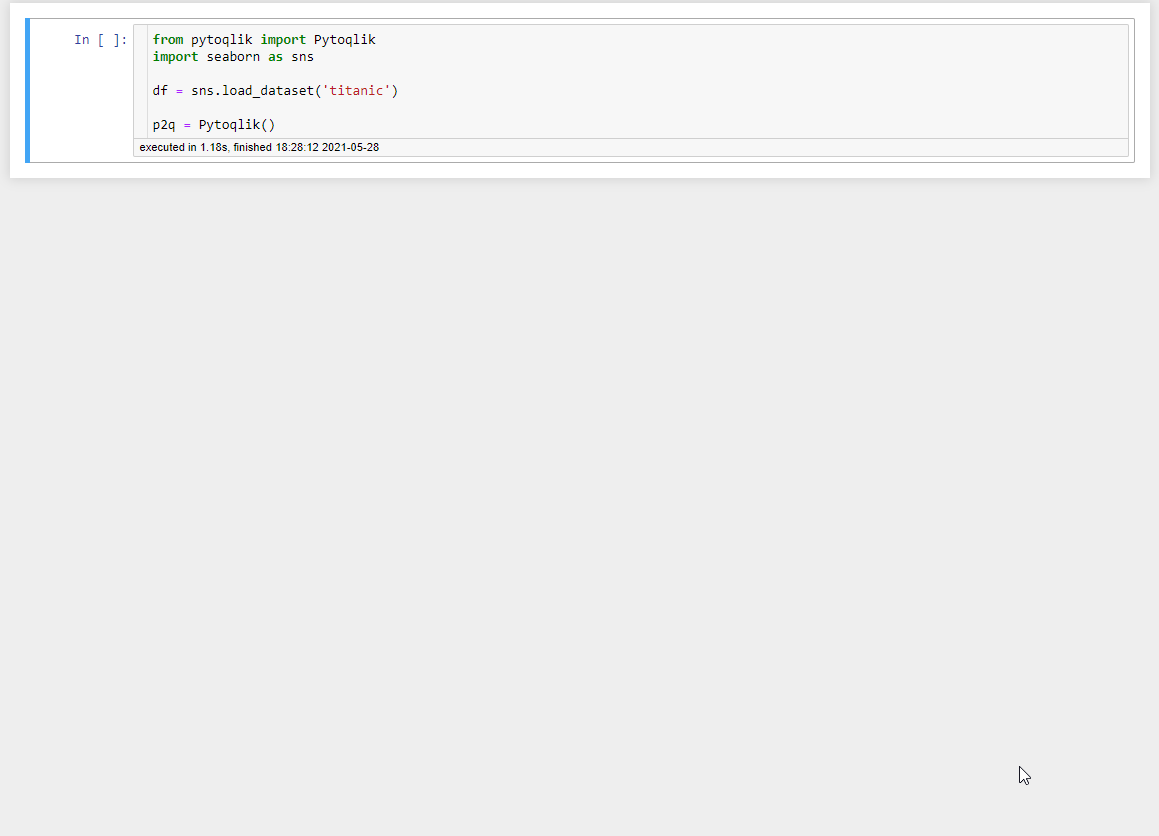
PyToQlik
PyToQlik is a library that allows you to integrate Qlik Desktop with Jupyter notebooks. With it you can:
Open and edit a Qlik app inside a Jupyter notebook;
Create a Qlik object with data from a pandas DataFrame data structure and/or;
Import data from a Qlik object and create a pandas DataFrame to work with in Python.
Getting Started
For this library to work you must have a functioning Qlik Desktop App installed and running on your local machine. You will also need to have the pandas library and a Jupyter Notebook local server (read https://jupyter.readthedocs.io/en/latest/running.html).
You can then download and install PyToQlik using:
Installation
pip install pytoqlik
Usage
Example 1
Creating a Qlik app and feeding it data
from pytoqlik import Pytoqlik
import seaborn
df = seaborn.load_dataset('tips') # df is just some example data provided by the seaborn library
p2q = Pytoqlik()
app = p2q.toQlik(df)
Example 2
Importing data from a Qlik object to Python
from pytoqlik import Pytoqlik
import seaborn
df = seaborn.load_dataset('tips') # df is just some example data provided by the seaborn library
p2q = Pytoqlik()
app = p2q.toQlik(df)
app.toPy('your ObjectID')
Step by step guide

Documentation
Current documentation can be found here.
Current limitations
PyToQlik is currently implemented for QlikSense Desktop versions. Cloud and Enterprise versions of Qlik are still in active development.
Features in development
Connectivity
Qlik Enterprise support
Qlik Cloud support
Functionality
Data fetching based on dimensions and measures
More robust embedding objects and sheets
More robust script editing
Object creation and manipulation via Python
Auxiliary functions, app listing and object listing
Task creation and managing
ETL features in Python